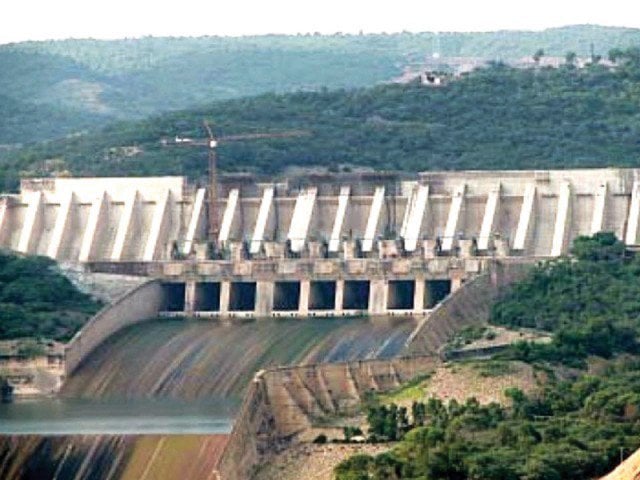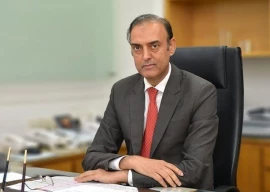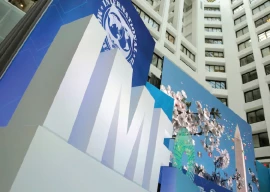
The investment volume usually runs into billions of dollars and the stringent criteria set by the World Commission on Dams for sustainable infrastructure development means that the aid money to fund big dams has started to dry up.
In 2016, the Asian Development Bank (ADB) walked away, citing, among other things, the huge risks involved in financing a mammoth dam like Diamer-Bhasha. It also rejected the resettlement action plan prepared by the Water and Power Development Authority (Wapda) on grounds of a lack of consensus as local communities were not made part of the decision-making process.
Imran says Bhasha dam is PTI's top priority
Earlier, in 2014, the World Bank Group made its funding conditional to an NOC from India as the planned dam site lies in a disputed territory – something which is unacceptable for Pakistan to ask India for.
Now the project has been given the green light by the government with a commitment and the project will be 100% financed through domestic resources.
So the question of the hour is: How can we build dams through innovative financing or through public-private partnerships (PPP) without reliance on multilateral banks?
The Diamer-Bhasha dam project could be divided into three phases: land acquisition, dam construction and power generation. For each phase, the optimal mode of financing is different.
For example, the land acquisition phase involves primarily LCY (local currency) component whereas the power generation phase has a huge requirement for FCY (foreign currency) as the country needs to import turbines and other project machinery.
A handsome Rs260m collected for dams
The government could start by creating state-owned special purpose vehicles (SPV) that will be entitled to all revenue streams and will be owned jointly by the federal government and local government bodies.
As the main revenue stream remains hydroelectric power, the SPV needs to sign royalty agreements on behalf of local and provincial governments with the federal government and Wapda.
The SPV also needs to sign power purchase agreements with provincial as well as federal governments and the National Electric Power Regulatory Authority (Nepra) may be brought on board to manage the long-term price risk in the form of a floor on the electricity price.
The SPV could be domiciled in a special economic zone and should pitch for subsidies as well as raise capital through debt-based and equity-based financing. The SPV could partially fund the project by selling coupon-paying bonds maturing in three, five, 10 and 15 years.
National Savings Organisation could invest in three-year bonds and target general public by launching Diamer Mohibwatan Certificates with charitable implications and offering a floating interest rate.
Moreover, the SPV could also introduce Shariah-compliant tradable Sukuk, luring away funds from customers and institutions that deal specifically in Islamic finance.
Similarly, the SPV could launch medium- and long-term bonds targeting mutual funds and pension funds respectively. The Federal Board of Revenue (FBR) could allow special incentives to people investing in long-term bonds by exempting proceeds of bond income from tax.
These long-term infrastructure bonds should be co-engineered with potential investors such as Employees Old-Age Benefits Institution (EOBI) to ensure that the end-product meets the long-term investment requirements of most pension funds.
For raising the foreign currency component, the SPV needs to collaborate with the State Bank of Pakistan (SBP) for launch of US dollar-denominated bonds, which can be named Diamer Pardes Certificates, with a different pricing structure and targeting the diaspora around the globe. The FBR could offer tax credits for the overseas dollars sent by Pakistanis to invest in these certificates. The Board of Investment should prepare pitch books and media campaigns for aggressive marketing of these FCY bonds in international tradeshows.
But while Pakistan is likely to gain from indigenous financing of this project, there is also a potential challenge to stop illicit financial flows and ensure compliance with Basel-III standards – though it might affect commitments by banks to a long-term financing plan.
Overall, the current big dam financing picture remains mixed – though it is a great opportunity for Pakistan to enter a new dawn of innovative project financing.
The writer is a Cambridge graduate and is working as a strategy consultant
Published in The Express Tribune, July 23rd, 2018.
Like Business on Facebook, follow @TribuneBiz on Twitter to stay informed and join in the conversation.
1732090022-0/Elmo-and-Amelia-(1)1732090022-0-405x300.webp)
1725523665-0/Minecraft-Movie-(1)1725523665-0-165x106.webp)

1732089759-0/BeFunky-collage-(75)1732089759-0-165x106.webp)


1732084432-0/Untitled-design-(63)1732084432-0-270x192.webp)










COMMENTS (3)
Comments are moderated and generally will be posted if they are on-topic and not abusive.
For more information, please see our Comments FAQ